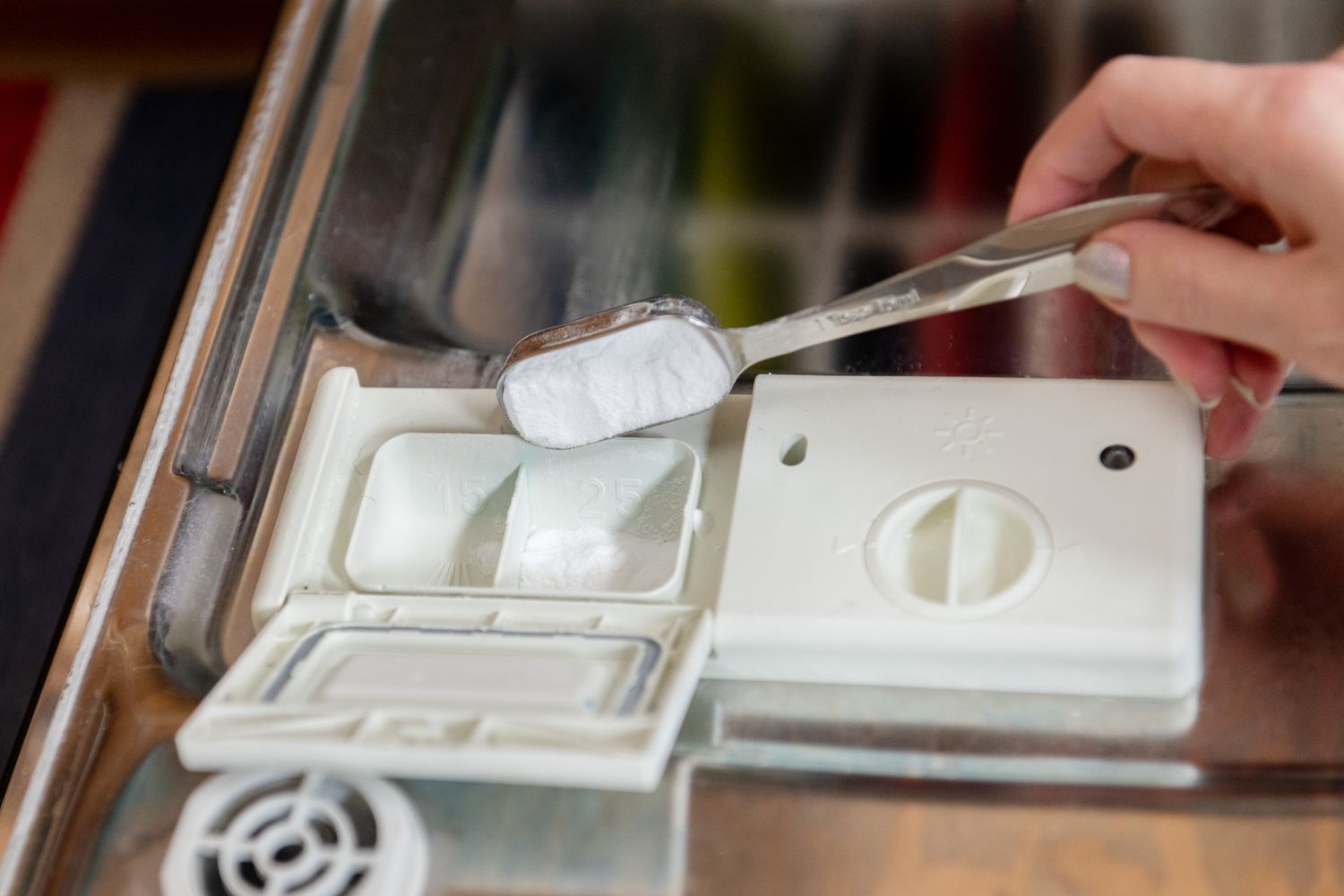Home>Interior Design>What Temperature To Wash Dark Clothes: An Expert Explains All


Interior Design
What Temperature To Wash Dark Clothes: An Expert Explains All
Modified: December 7, 2023
Discover the optimal temperature to wash dark clothes and keep their colors vibrant. Our expert explains it all. Enhance your interior design with these laundry tips.
(Many of the links in this article redirect to a specific reviewed product. Your purchase of these products through affiliate links helps to generate commission for Storables.com, at no extra cost. Learn more)
Introduction
When it comes to caring for our clothes, we often pay close attention to the washing instructions provided by manufacturers. This is especially true for items of dark clothing, which we want to keep looking vibrant and rich in color. One key factor in maintaining the integrity of dark clothes is the temperature at which they are washed.
Understanding the basics of washing dark clothes is essential to ensure their longevity and to prevent any undesirable outcomes. In this article, we will explore the importance of washing dark clothes separately and the potential effects of using the wrong temperature. Additionally, we will provide expert recommendations for achieving optimal results when washing dark clothes.
Key Takeaways:
- Washing dark clothes in cold water helps preserve color, prevent bleeding, and reduce shrinkage. Exceptions may require slightly warmer water, but always follow fabric care instructions.
- Expert tips for preserving dark clothes include washing inside out, using gentle detergents, and air drying when possible. Separating dark and light colors is crucial for maintaining vibrancy.
Understanding the basics of washing dark clothes
When it comes to washing dark clothes, it is crucial to understand why they should be treated differently from lighter-colored garments. The main reason is to prevent color bleeding and fading. Dark clothes have a higher concentration of dye, and if washed with lighter items, there is a risk of the dye transferring onto the lighter fabrics, causing discoloration. Washing dark clothes separately helps to preserve their vibrant hues and prevent any unwanted color mixing.
Another important aspect to consider is the potential effects of using the wrong temperature when washing dark clothes. Different fabrics have different temperature tolerances, and using excessively hot water can lead to shrinkage, distortion, and damage to the fabric fibers. On the other hand, using water that is too cold may not effectively remove dirt and stains, leading to unsatisfactory results.
Recommended temperature for washing dark clothes
The recommended temperature for washing dark clothes varies depending on the fabric type and the specific care instructions provided by the manufacturer. As a general guideline, it is advisable to use cold water for most dark clothes. Cold water helps to maintain the integrity of the dye, reduces the risk of color bleeding, and minimizes the potential for shrinkage.
However, there are exceptions to this rule. Some dark fabrics, such as denim or heavily soiled items, may require a slightly higher temperature to effectively remove dirt and stains. In such cases, a gentle or delicate cycle with warm water is often recommended. It is important to check the care label on the garment for any specific temperature guidelines provided by the manufacturer.
Key Takeaways:
- Washing dark clothes in cold water helps preserve color, prevent bleeding, and reduce shrinkage. Exceptions may require slightly warmer water, but always follow fabric care instructions.
- Expert tips for preserving dark clothes include washing inside out, using gentle detergents, and air drying when possible. Separating dark and light colors is crucial for maintaining vibrancy.
Understanding the basics of washing dark clothes
When it comes to caring for our clothes, we often pay close attention to the washing instructions provided by manufacturers. This is especially true for items of dark clothing, which we want to keep looking vibrant and rich in color. One key factor in maintaining the integrity of dark clothes is the temperature at which they are washed.
Importance of washing dark clothes separately
Dark clothes require special attention as they tend to bleed color during the washing process. By washing dark clothes separately from lighter-colored garments, we can prevent color bleeding and protect the vibrancy of our dark clothing. Mixing dark clothes with lighter ones can result in the transfer of dye, causing discoloration and making the clothes lose their original shade.
It is important to note that even if we only have a few dark items, it is still advisable to wash them together to minimize the risk of color bleeding. This will ensure that our dark clothes maintain their true color and prevent any mishaps during the washing process.
Effects of wrong temperature on dark clothes
The temperature at which dark clothes are washed can have a significant impact on their appearance and longevity. Using the wrong temperature can lead to undesirable consequences, including fading, color bleeding, fabric damage, shrinkage, and distortion.
If dark clothes are washed in water that is too hot, the excessive heat can cause the fabric dye to fade or bleed. This results in the clothes losing their vibrant color and looking dull and worn out. Additionally, hot water can weaken the fibers of the fabric, leading to premature wear and tear.
On the other hand, using cold water or water that is too cold may not effectively remove dirt, oils, and stains from dark clothes. This can leave the clothes looking dingy and not fully clean. Cold water is less efficient at breaking down and removing stains, especially those that are oil-based or heavily soiled.
Furthermore, extreme temperatures, whether hot or cold, can cause dark clothes to shrink and lose their original shape. The fabric fibers contract and become distorted when exposed to extreme temperature changes. This can lead to an ill-fitting garment that is no longer flattering or comfortable to wear.
By understanding the potential effects of using the wrong temperature, we can make informed decisions when it comes to washing our dark clothes and ensure that they remain in excellent condition for a long time.
Recommended temperature for washing dark clothes
When it comes to washing dark clothes, selecting the appropriate temperature is crucial for maintaining their color and fabric integrity. While cold water is generally the best choice for most dark fabrics, there are some factors to consider that may require adjustments in temperature.
Temperature guidelines for different types of dark fabrics
Before washing dark clothes, it is essential to check the care label for any specific temperature recommendations provided by the manufacturer. Different types of fabrics may have different temperature tolerances.
In general, most dark clothes can be washed effectively in cold water. Cold water helps to preserve the integrity of the dye, reducing the risk of color bleeding and fading. It also minimizes the potential for shrinkage, maintaining the original size and fit of the garments.
However, there are certain fabrics that may benefit from slightly warmer water temperatures. For example, denim is known for its durability and may require warmer water to effectively remove dirt and oil stains. In this case, using a gentle or delicate cycle with warm water can help to break down the stains without compromising the color or structure of the fabric.
Additionally, heavily soiled dark clothes may require warmer water to ensure a thorough cleaning. Warm water has a better ability to dissolve and remove stubborn stains, making it suitable for items that have been exposed to dirt, grease, or other tough substances.
Tips for adjusting temperature based on fabric sensitivity
When washing dark clothes, it is important to consider the sensitivity of the fabric to temperature. Some fabrics, such as silk or delicate synthetics, may be more prone to damage from hot water. In these cases, it is best to stick to cold water or use the delicate cycle with warm water, if necessary, to minimize the risk of fabric distortion or discoloration.
For added protection, consider using a laundry detergent specifically formulated for dark clothes. These detergents are designed to prevent color fading and bleeding, allowing you to maintain the vibrancy of your dark garments for longer.
If you’re unsure about the appropriate temperature for a specific garment, it’s always a good idea to err on the side of caution and choose a lower temperature. You can gradually increase the water temperature if needed, depending on the fabric’s tolerance and the level of dirt or stains present.
By following the temperature guidelines for different types of dark fabrics and adjusting the temperature based on fabric sensitivity, you can ensure that your dark clothes are washed effectively without compromising their color or structural integrity.
Consequences of washing dark clothes at the wrong temperature
Using the wrong temperature when washing dark clothes can have a range of negative consequences that can affect both the appearance and longevity of the garments. It’s essential to understand these potential outcomes to avoid causing damage to your beloved dark clothes.
Fading and color bleeding
One of the most common consequences of washing dark clothes at the wrong temperature is fading and color bleeding. Dark clothes often contain concentrated dyes, and when exposed to hot water, the heat can cause the dye to fade or release, leading to a loss of vibrancy and the potential for color bleeding onto other garments in the wash. This can result in unsightly discoloration and the need for replacement or dying of the affected items.
Damage to fabric fibers
Using excessively hot water when washing dark clothes can damage the fabric fibers, especially if the garments are made of delicate materials like silk or wool. High temperatures can weaken the fibers, leading to fabric deterioration, fraying, and even holes in the clothing. Over time, this can significantly reduce the lifespan of the garments, resulting in the need for early replacements.
Shrinkage and distortion
Another consequence of washing dark clothes at the wrong temperature is the potential for shrinkage and distortion. Fabrics have different tolerance levels to temperature fluctuations, and subjecting them to extreme hot or cold water can cause the fibers to shrink and lose their original shape. This can result in ill-fitting clothes that are uncomfortable to wear and may not be salvageable even with stretching or alterations.
Additionally, distortion can occur when fabrics are exposed to temperature changes during the washing and drying process. The fibers may contract or expand unevenly, leading to misshapen garments that no longer look their best or fit properly.
It’s worth noting that the consequences of washing dark clothes at the wrong temperature may not be immediately apparent. Fading, damage to fibers, and shrinkage can occur gradually over several washes, and by the time the effects become noticeable, it may be too late to reverse them.
By understanding the potential consequences and avoiding the wrong temperature settings, you can ensure that your dark clothes retain their vibrant colors, fabric integrity, and proper fit for a longer period.
Factors to consider when deciding on the wash temperature for dark clothes
Choosing the right wash temperature for your dark clothes involves considering several factors that can impact the outcome of the washing process. By taking these factors into account, you can make informed decisions and ensure that your dark clothes are cleaned effectively and safely.
Fabric type and care instructions
The fabric type of your dark clothes is a crucial factor when determining the appropriate wash temperature. Different fabrics have different temperature tolerances, and it’s important to follow the care instructions provided by the manufacturer. The care label on the garment will usually specify the recommended wash temperature.
For delicate fabrics such as silk or wool, it’s generally best to opt for cold water or a gentle cycle with low temperatures to avoid damaging the fibers. On the other hand, some sturdier fabrics like denim or cotton may tolerate warmer water for thorough cleaning. Checking the care instructions will help you determine the optimal temperature for each garment.
Level of dirt or stains on the clothes
The level of dirt or stains on your dark clothes can also influence your choice of wash temperature. If the garments are heavily soiled or have stubborn stains, warmer water can help to loosen and remove the dirt more effectively. However, be cautious not to exceed the fabric’s recommended temperature. For regular dirt and everyday wear, cold or slightly warm water is usually sufficient for cleaning dark clothes without risking damage or color fading.
Personal preferences and risk tolerance
Personal preferences and risk tolerance play a role in deciding the wash temperature for dark clothes. Some individuals prefer to err on the side of caution and always wash their dark clothes in cold water to minimize the risk of color fading or damage. Others may be more comfortable using slightly warmer water if the fabric and care instructions allow it, believing it offers better stain removal. Assess your personal preferences and assess your willingness to take risks based on the fabric type and condition of your dark clothes.
It’s worth noting that using cold water for most dark clothes is a safe approach that minimizes the risk of color bleeding, fading, and damage to the fabric. If you’re unsure about the best wash temperature to use, sticking to cold water is a reliable choice that will keep your dark clothes looking their best for longer.
By considering factors such as fabric type and care instructions, the level of dirt or stains, as well as your personal preferences and risk tolerance, you can make informed decisions about the wash temperature for your dark clothes. This will help you achieve optimal cleaning results while preserving the color and fabric integrity of your garments.
Expert advice on achieving optimal results
When it comes to washing dark clothes, following expert advice can help you achieve optimal results and prolong the lifespan of your garments. Here are some insights and tips that can guide you in caring for your dark clothes:
Using cold water for most dark clothes
Experts generally recommend using cold water for washing most dark clothes. Cold water helps to preserve the integrity of the fabric and prevent color bleeding or fading. It is particularly effective for dark clothes made from synthetic materials or those with delicate dyes.
Cold water also helps to minimize the risk of shrinkage and maintain the original size and fit of your garments. Using a cold water wash cycle is a safe and reliable way to clean your dark clothes without compromising their color or structural integrity.
Exceptions and special circumstances
While cold water is a good rule of thumb, there are exceptions and special circumstances that may require deviation from this general guideline. For heavily soiled garments or those with stubborn stains, warmer water may be necessary to effectively remove dirt and grime. However, it is important to stay within the temperature range recommended by the garment’s care label to avoid any potential damage.
Additionally, some dark fabrics such as denim or cotton may benefit from a slightly warmer water temperature to ensure thorough cleaning. The key is to strike a balance between effective stain removal and preserving the fabric’s color and structural integrity.
Tips for preserving color and prolonging garment lifespan
To preserve the color of your dark clothes and extend their lifespan, there are a few tips to keep in mind:
- Wash inside out: Turning your dark clothes inside out before washing can help protect the outer layer of fabric from direct contact with other garments or the washing machine drum, reducing the risk of color fading or abrasion.
- Use gentle detergents: Opt for detergents specifically formulated for dark clothes. These detergents are designed to minimize color fading and bleeding while effectively cleaning your garments. Avoid using bleach or harsh chemicals that can strip away color and damage the fabric.
- Avoid overloading the machine: Overloading the washing machine can prevent thorough cleaning and cause excessive friction between garments, leading to color fading or damage. Follow the machine’s recommended load capacity, and wash dark clothes in smaller batches if necessary.
- Air dry when possible: Whenever possible, air drying is the gentlest option for drying dark clothes. It helps to preserve the color and prevent shrinkage. If using a dryer, choose a low heat setting to minimize potential damage.
- Separate dark and light colors: Always wash dark clothes separately from lighter-colored garments to avoid color bleeding and maintain the integrity of your dark clothes. Sorting your laundry by color is a simple but effective practice to keep your dark clothes looking their best.
By following these expert tips, you can help ensure that your dark clothes retain their color and quality for longer, allowing you to enjoy them for many wearings to come.
Conclusion
Washing dark clothes requires careful consideration and attention to detail in order to maintain their vibrant colors and prolong their lifespan. By understanding the basics of washing dark clothes, including the importance of washing them separately and the potential consequences of using the wrong temperature, you can make informed decisions when caring for your garments.
When it comes to selecting the appropriate temperature for washing dark clothes, cold water is generally the recommended choice. Cold water helps to preserve the integrity of the fabric, minimize color bleeding and fading, and reduce the risk of shrinkage and distortion. However, there may be exceptions and special circumstances where slightly warmer water is necessary for effective stain removal or cleaning heavily soiled items. In these cases, follow the care instructions provided by the manufacturer and be mindful of the fabric’s sensitivity to temperature.
To achieve optimal results, it is important to consider factors such as the fabric type and care instructions, the level of dirt or stains on the clothes, and your personal preferences and risk tolerance. By taking these factors into account, you can make informed decisions about the wash temperature for your dark clothes, ensuring that they are cleaned effectively and safely.
Expert advice recommends using cold water for most dark clothes, but it is essential to be flexible and adaptable based on the specific circumstances. By following additional tips, such as washing inside out, using gentle detergents, avoiding overloading the machine, and separating dark and light colors, you can further preserve the color and prolong the lifespan of your dark clothes.
In conclusion, taking proper care of your dark clothes through appropriate wash temperature selection and implementing expert advice and tips can help you maintain their vibrant colors, protect their fabric integrity, and ensure they last for years to come. By treating your dark clothes with the care they deserve, you can confidently step out in style, knowing that your garments will continue to look their best.
Frequently Asked Questions about What Temperature To Wash Dark Clothes: An Expert Explains All
Was this page helpful?
At Storables.com, we guarantee accurate and reliable information. Our content, validated by Expert Board Contributors, is crafted following stringent Editorial Policies. We're committed to providing you with well-researched, expert-backed insights for all your informational needs.











0 thoughts on “What Temperature To Wash Dark Clothes: An Expert Explains All”